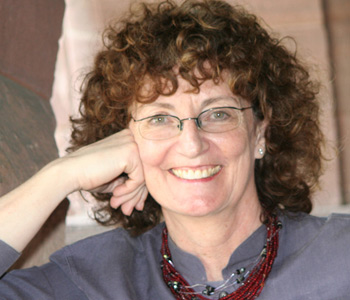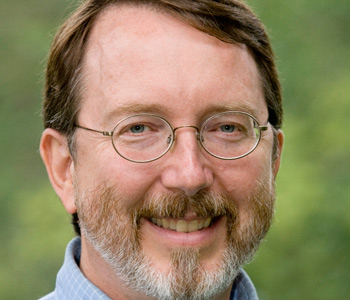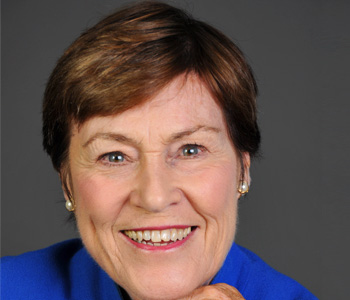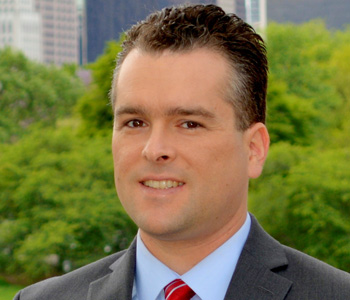Christopher L. Eisgruber
The Next Justice: Repairing the Supreme Court Appointments Process
Princeton University Press
272 pages, 6 x 9 inches
ISBN 978 0691143521
ISBN 978 0691134970
Judge Sonia Sotomayor’s “composure remained intact and her confirmation to the Supreme Court seemed on track,” reported the New York Times on July 15. No summary better captures the bizarre dynamic of recent confirmation hearings. Senators grill the nominee mercilessly, and she tries to avoid saying or doing anything interesting. Keep your cool and get confirmed—that’s the assignment. Not surprisingly, many people wonder whether this is the right way to pick a Supreme Court justice.
Several popular books, with titles like The Confirmation Mess and Supreme Chaos, blame the Senate for politicizing the appointments process. These books contend that the Senate should defer to presidential choices, examining a nominee’s legal acumen but making no effort to evaluate her values or politics.
The Next Justice: Repairing the Supreme Court Appointments Process takes a different tack. It argues that the confirmation process—indeed, the entire appointments process—is political by design. The Supreme Court renders controversial decisions, and the Constitution divides the appointment power between the president and the senate. Not surprisingly, the process has been bruising and partisan from the get-go (if you doubt that, consider the fate of John Rutledge, George Washington’s unsuccessful nominee for Chief Justice in 1795—he attempted suicide after senators rejected him because of his foreign policy views).
Depoliticizing the appointments process should not be our goal. Instead, we should try to make it political in the right way. To do that, we need to understand what distinguishes Supreme Court justices from one another and hence what distinguishes good nominees from bad ones.
Popular concepts like “judicial restraint” do not help much. All the justices defer to legislators about some issues, but not others. The liberals defer about gun control and affirmative action but not about abortion or gay rights; for the conservatives, it is the other way around. Nor, unfortunately, does President Obama’s notion of empathy get us anywhere. Sure, a good judge should understand the interests at stake in a case—but at the end of the day, she has to choose between competing interpretations of the law. That requires a combination of values and judgment, what people often call a judicial philosophy.
The heart of The Next Justice is its effort to clarify the idea of a judicial philosophy. It does that by describing what the Supreme Court actually does when it confronts hard cases. Drawing on both historical research and personal observation, the book takes readers behind the scenes at the Supreme Court to show how the justices reach conclusions and assemble majorities.
What happens at the Court is both genuinely political and genuinely principled. Values matter, as they do in the legislature, but the justices honor procedural constraints very different from those that apply in Congress. They do not trade votes across cases, for example. They also recognize that their role sometimes requires them to defer to other branches even when they disagree with what those branches have done. At the end of the day, though, they often end up disagreeing along recognizably political lines. For that reason, the appointments process—in the White House and in the Senate—needs to focus on nominees’ values, not just their professional credentials.

The hearings are only the most visible part of the appointments process, not the most important part.
Like many law professors, I began my career by doing two judicial clerkships—basically, serving as a staff lawyer for a federal judge. I spent one year in the chambers of Patrick Higginbotham, a conservative appellate court judge in Texas who was on Ronald Reagan’s short list for the Supreme Court. I spent the next year working for liberal Justice John Paul Stevens at the Supreme Court.
Though they disagreed about many constitutional issues, Judge Higginbotham and Justice Stevens shared a deep respect for legal craftsmanship. They gave me an appreciation of how judging depended on both legal skill and moral values.
Unfortunately, that kind of understanding is strikingly absent from much public commentary about what judges do. Popular accounts of judging instead fall into two overly simple categories. One consists of prim fictions in which judges steadfastly abstain from any remotely political judgments. John Roberts was spinning that kind of a story when he told the Senate that he would be nothing more than an umpire, calling balls and strikes. So was Sonia Sotomayor when she told the senators that her judicial philosophy was “simple: fidelity to the law. The task of a judge is not to make law – it is to apply the law.”
The other account goes to the opposite extreme. It describes crassly political justices, assisted by Machiavellian law clerks, who twist the law to reach politically motivated results.
Both accounts are profoundly misleading. Judges, on and off the Supreme Court, do indeed recognize an obligation to apply the law, not make it. The law, however, often speaks in abstractions. The Constitution, for example, specifies that “no state shall deny to any person … the equal protection of the laws.” What does “equal protection” mean? Judges can get some help from precedent and history. But, at the end of the day, they cannot help make a judgment about what it means for laws to protect people equally. Liberal and conservative judges will reach different conclusions about that question. They cannot avoid controversial choices by adhering to the law. On the contrary, adhering requires choosing.
Presidents know that political values matter when choosing Supreme Court justices, and from John Adams onward presidents have paid attention to ideology when selecting nominees. Over the last forty years, however, the stakes have risen. The civil rights revolution of the 1960s made the Supreme Court a hot-button issue. It has been at the center of the culture wars ever since. Beginning with Richard Nixon, Republican presidents have placed an unprecedented emphasis on ideological purity when choosing nominees. Jan Crawford Greenberg, for example, reports that George H. W. Bush passed over Ken Starr partly because some members of his administration doubted that Starr was conservative enough (they mistakenly thought David Souter was a better bet).
As presidents upped the ante, senators responded in kind. Since 1968, seven nominees have failed to win confirmation. In the preceding seventy-four years, the Senate rejected only one nominee. Don’t blame the Senate, though: the country is deeply divided about the roles that Constitution and the Court should play. The confirmation battles of the last four decades reflect those divisions.
With the stakes so high, we need a better way to discuss what the Court does, whom the president should appoint, and when the Senate should confirm a nominee. My goal in The Next Justice is to enhance our ability to address those questions.
Justice Stevens permitted me to include in the book an anecdote that illustrates how differently judges and legislators behave when dealing with politically controversial issues. While I was clerking for him, the Court decided an abortion case, Hodgson v. Minnesota. Minnesota required girls seeking an abortion to get the permission of both of their parents. It was an unusual law—most states required only the consent of one parent. You might also think that it was a cruel law. After all, when would a parent consent to a daughter’s abortion without even telling his or her spouse? In broken families, you might suspect, or in families where child abuse had occurred. So the two-parent rule might be superfluous except in cases where it was damaging.
When Hodgson reached the Court in 1990, Justice Sandra Day O’Connor had never voted to strike down any restriction on abortion rights. After oral arguments, though, she indicated that she thought Minnesota’s two-parent notification rule was unconstitutional. Justice Stevens wrote an opinion holding the law invalid. He wanted Justice O’Connor to join him. He drafted very carefully and narrowly, hoping that the opinion would be acceptable to her.
Justice Stevens circulated the opinion and waited for a reply. Weeks passed without word from the O’Connor chambers. One day, as Justice Stevens met with me and his other clerks, he wondered aloud about what Justice O’Connor was thinking. We suggested that he go down the hall and ask her.
He rejected our suggestion. The opinion, he said, should stand or fall on the basis of the reasons offered in it. He did not want Justice O’Connor to feel pressured or lobbied. So he waited. Eventually, Justice O’Connor sent a note joining the opinion.
Justice Stevens’s position was unusual, to be sure. Most justices would feel no reservation about discussing legal issues with a colleague. Justice Stevens himself had done so in the past. Nevertheless, his conduct exemplified, in very pure form, a conviction that all of the justices on the Court would share. They view it as their responsibility to decide cases on their best judgment about the law, not as a favor to another justice or as part of a vote-trading package.
In the legislature, log-rolling is a perfectly acceptable, perhaps even commendable, way to reach a compromise. On the Supreme Court, it is completely forbidden. However deep their other disagreements might be, the justices on the Court agree 9-0 about that.

Choosing between competing interpretations of the law requires a combination of values and judgment, what people often call a judicial philosophy.
Some people believe that the Supreme Court appointments process boils down to raw power: powerful presidents nominate staunch ideological allies, and weak ones choose compromise candidates. No doubt about it: power does matter. For example, when the president’s own party controls the Senate, roughly 89% of Supreme Court nominees win confirmation. When the opposing party has a Senate majority, less than 70% of nominees make it to the Court. Other similar factors also lower a nominee’s odds of success—for example, nominees selected by lame-duck presidents do worse than nominees chosen by newly elected presidents.
Power is not the whole story, though. Ideas matter, too. When the Senate is equally divided, and a nominee’s fate is uncertain, moderate senators must choose how to vote. Their decisions will determine whether a nominee gets confirmed by a narrow margin, as Clarence Thomas was, or rejected, as happened to Robert Bork.
Ideas also matter to presidential choices. Dwight Eisenhower thought that he should appoint ideological moderates, whereas Richard Nixon wanted staunch conservatives. George W. Bush pushed the ideological envelope with John Roberts and Sam Alito, both of whom came with impeccable conservative credentials. Barack Obama, by contrast, selected a moderate liberal, Sonia Sotomayor, even though his party enjoyed an overwhelming advantage in the Senate.
Ideas about the Court influence appointments in other ways, too. For example, presidents and senators have increasingly viewed federal judicial experience as an essential credential for Supreme Court nominees. When Sam Alito replaced Sandra Day O’Connor, the Court for the first time in American history consisted of nine justices all of whom were sitting federal court judges at the time of their appointment. And, also for the first time in American history, it contained nobody who had ever held elected office. This change was not forced by power relationships; it results from the way we think about the Court and the appointments process.
Yet, when people think about repairing the appointments process, they usually focus on one narrow issue—how to change the confirmation hearings. No book about the appointments process can ignore the hearings, and The Next Justice makes suggestions about how to improve them. It would be wonderful if the hearings could move beyond artificial exchanges about umpiring and fidelity to law. We should remember, though, that the hearings are only the most visible part of the appointments process, not the most important part. The keys to the process are choices that presidents and senators make, often behind closed doors but under the influence of public debate.
With the Supreme Court sharply divided about a wide range of constitutional issues, much will be at stake in the next few nominations. Who gets nominated, and who gets confirmed, will depend on many things, including our view of the Supreme Court’s role. Enriching that view and exposing its connection to the appointments process are the primary goals of The Next Justice.




We don't put paywalls. We don't distract you with ads. We don't sell your data.
Please help to keep this running!